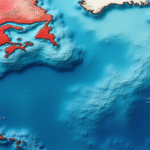Background on Key Figures and Context
The United States and Israel have reportedly discussed the possibility of Washington overseeing a temporary administration in Gaza following the recent conflict. This proposed arrangement centers around a transitional government led by an American official who would supervise Gaza until it is demilitarized, stabilized, and a viable Palestinian administration has emerged.
Who are the key figures?
While no specific names have been mentioned, these high-level discussions involve unnamed sources familiar with the matter. These individuals are not authorized to publicly disclose details of these conversations.
Why is this relevant?
This potential arrangement draws parallels to the Coalition Provisional Authority (CPA) established by the US in Iraq shortly after the 2003 invasion that toppled Saddam Hussein. The CPA was perceived by many Iraqis as an occupying force and eventually transferred power to an interim Iraqi government in 2004 after failing to curb a growing insurgency.
Key Points of the Proposed Plan
- Temporary Administration: The US-led administration would not have a fixed duration, depending on the evolving situation on the ground.
- Collaboration with Other Nations: The plan includes inviting other countries to participate in the US-led administration for Gaza, though no specific nations have been identified.
- Exclusion of Hamas and Palestinian Authority: The administration would rely on technocratic Palestinians while deliberately excluding the Islamist group Hamás and the Palestinian Authority.
Potential Impact and Challenges
This proposed plan aims to establish stability in Gaza by demilitarizing the region and fostering a viable Palestinian administration. However, several challenges could arise:
- Perception of Occupation: Similar to the CPA in Iraq, there’s a risk that a US-led administration might be viewed as an occupying force by the local population.
- Exclusion of Political Factions: Leaving out Hamás and the Palestinian Authority could complicate efforts to achieve a lasting political solution and may hinder international support.
- Recruitment of Technocrats: Identifying and integrating capable technocratic Palestinians who are willing to participate in the interim administration might prove difficult.
Key Questions and Answers
- Q: Who is leading these discussions? A: Unnamed sources familiar with the matter, who are not authorized to publicly disclose details.
- Q: What is the proposed duration of this temporary administration? A: There is no fixed duration; it depends on the evolving situation in Gaza.
- Q: Which countries are being invited to participate? A: The article does not specify any countries, only mentioning that other nations would be invited to collaborate.
- Q: Why are Hamás and the Palestinian Authority being excluded? A: The plan aims to sideline political factions and focus on technocratic expertise for the interim administration.
Conclusion (No direct call to action or technical details)
This proposed US-led temporary administration for Gaza post-conflict aims to establish stability and foster a viable Palestinian administration. However, it faces challenges such as potential perceptions of occupation and the exclusion of key political factions. The plan’s success will largely depend on how these obstacles are navigated and the ability to engage other nations and capable Palestinian technocrats in the interim administration.






